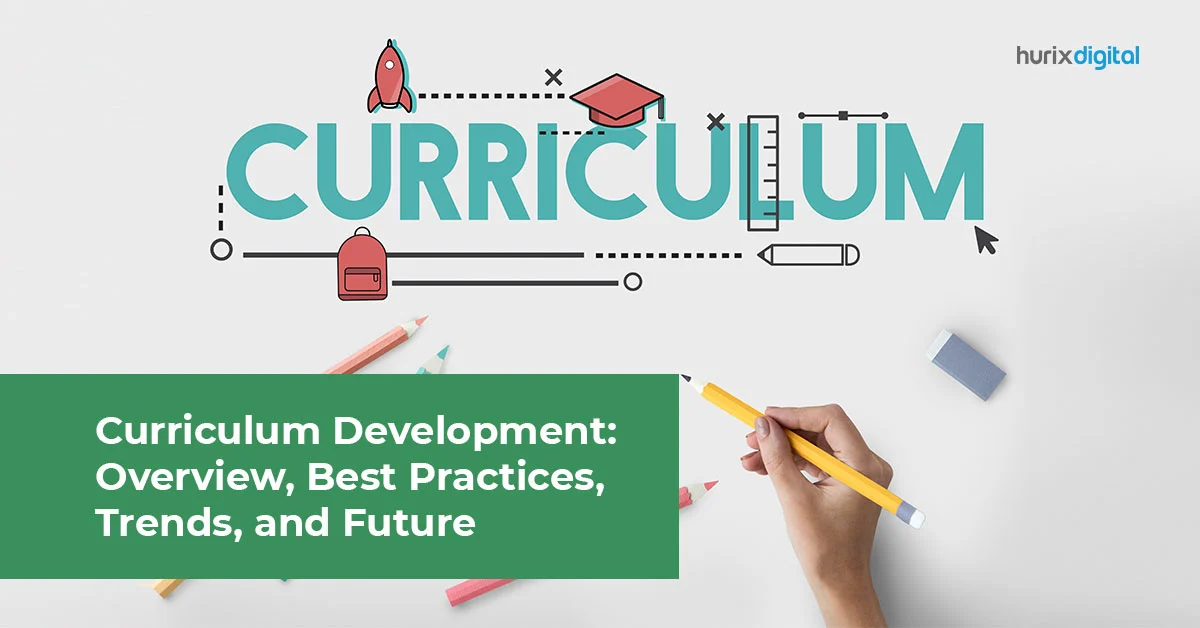The curriculum is the backbone of any nation’s education system. To achieve quality education, designing a good curriculum becomes paramount.
While there is no right or wrong approach to curriculum development, it’s essential to follow the principles of curriculum development to design a balanced curriculum.
Without these principles, the curriculum design will likely lack the learning experiences required to nurture a balanced development of a child. Before we jump into these principles, let’s first understand the basics of the curriculum development process.
Table of Contents:
- The Curriculum Development Process
- What are the Types of Curriculum Development Designs?
- What are the Main Principles of Curriculum Development?
- Wrapping Up
The Curriculum Development Process
Curriculum development is a process of designing instructional activities, sequencing and selecting objectives, choosing assessment methods, etc., for the programs or courses offered at educational institutions.
It aims to develop an effective learning environment for students to acquire the required skills and knowledge to succeed in their personal and professional lives outside of the classroom.
The curriculum development process involves continuous improvement rather than a stagnant approach. The content is revised, reviewed, and upgraded based on the demands and needs.
What are the Types of Curriculum Development Designs?
1. Problem-Centered Model
Problem-centered curriculum designs help students develop critical thinking, problem-solving, and communication skills. The basic idea is to provide a highly interactive learning environment wherein the students are given problems and encouraged to find solutions after careful observation.
2. Subject-Centered Model
Subject-centered curriculum designs focus on a specific discipline or subject matter rather than on the students. They follow the traditional approach that includes four curriculum design subtypes: discipline design, subject-area design, correlation design, and broad-field design.
3. Learner-Centered Model
Learner-centered curriculum designs focus on the learning needs of each learner. They aim to create an independent learning environment for students with well-regulated liberty.
What are the Main Principles of Curriculum Development?
The principles of curriculum development are the foundation of an effective and well-rounded curriculum. They are values, philosophies, moralities, and norms that benefit students, teachers, and the entire education system. There are several curriculum development principles, but here are the most significant ones:

1. The Principle of Child-Centeredness
A child-centered curriculum focuses on students’ motives, needs, and concerns and ensures that they are actively engaged in learning. This principle allows educators to customize instructions to meet each child’s unique needs and interests rather than sticking to the predetermined curriculum.
Students’ interests change based on their age groups, circumstances, and tastes. So learning experiences must be curated to match the learners’ interests, psychology, aspiration, and capacity. Also, while developing any curricular activities, teachers should consider ways to enrich students’ interests.
2. The Principle of Integration
The principle of integration helps students acquire a more comprehensive understanding of concepts by adding varied subjects at distinct stages of education. This promotes problem-solving and critical thinking skills.
Likewise, to enable learners to correlate with the content, the existing subjects must be integrated with other subjects. When students see how science, social studies, math, and language arts are connected, they can better understand every subject.
The integrated curriculum should also provide opportunities for students to collaborate on projects and develop emotional and social skills.
3. The Principle of Utility
According to the principle of utility, the curriculum must include valuable and rich content that is relevant to students’ interests and lives. The main aim of the curriculum design must be to maximize its utility to the individual and society, enabling them to meet their goals.
This principle not only helps educators to cover the essential skills and topics for their learners but also helps them to ensure that the curriculum is in line with the state standards.
4. The Principle of Character Formation
The principle of character formation highlights the significance of developing the moral values and character of students. A good curriculum not only educates students via textbook knowledge but also aids in character training throughout their academic years.
When students are taught to think and behave morally, they become productive and good citizens. Excellent character traits like integrity, perseverance, and discipline enhance learners’ capacity to excel academically and beyond the classroom.
Additionally, character education also aids in reducing delinquency and crime rates and promoting social justice.
5. The Principle of Flexibility
Dynamism and flexibility are ideal qualities that a curriculum must possess to meet the unique needs of learners. Students have different interests and abilities, and they learn in distinct ways.
A flexible curriculum not only enables educators to be responsive and creative in their teaching but can also be adapted to changes in technology. Appropriate modifications and timely updates ensure that students are up-to-date with the latest advancements and trends.
6. The Principle of Creativity and Conservation
While the principle of conservation emphasizes that resources must be used creatively and wisely, the creative principle encourages the exploration of new approaches and innovative ideas. Following both these principles is critical to developing an effective curriculum that will help conserve one’s cultural heritage.
7. The Principle of Practical Work
Active by nature, children learn more and gain a deeper understanding of a subject by applying theoretical or abstract concepts to practical scenarios. The principle of practical work states that a curriculum must be developed to offer students maximum practical work opportunities.
8. The Principle of Mental Discipline
The principle of mental discipline focuses on developing a curriculum that fosters students’ mental powers or faculties through practice and cognitive training. Mental discipline enhances students’ attention and helps them to persist in their efforts despite setbacks or distractions.
It encourages learners to think logically and critically and hone their problem-solving skills. However, it takes plenty of effort and patience to instill a sense of mental discipline in students. But the benefits reaped by the learners are worth all the efforts.
Wrapping Up!
While curriculum development is necessary for educational institutions, implementing the curriculum is equally important to achieve its objectives. Regularly reviewing the curriculum is also essential to ensure it aligns with the student’s needs and changing global educational trends.
If you’re seeking the services of professionals to develop an effective curriculum, get in touch with HurixDigital today! Our team of experts can help you design a personalized curriculum for your learners.
Also Read – The Importance Of Curriculum Development In Enhancing Teaching And Learning
Frequently Asked Questions (FAQs)
1. Why is curriculum review important?
A. Regularly reviewing the curriculum ensures alignment with students’ needs and global educational trends, helping educational institutions achieve their objectives effectively.
2. How does the curriculum development process work?
A. The curriculum development process involves designing instructional activities, setting objectives, choosing assessment methods, and revising content to continuously improve the learning experience.
3. How does a flexible curriculum benefit students?
A. A flexible curriculum caters to diverse learning styles and interests, enabling educators to adapt teaching methods and content to changes in technology and student needs.
4. How do educators ensure the curriculum remains relevant?
A. Educators regularly review and update the curriculum to align with changing educational trends and students’ evolving needs.
5. Can curriculum development support the integration of practical skills?
A. Yes, curriculum development can include practical work opportunities to help students apply theoretical concepts to real-world scenarios and develop practical skills.











